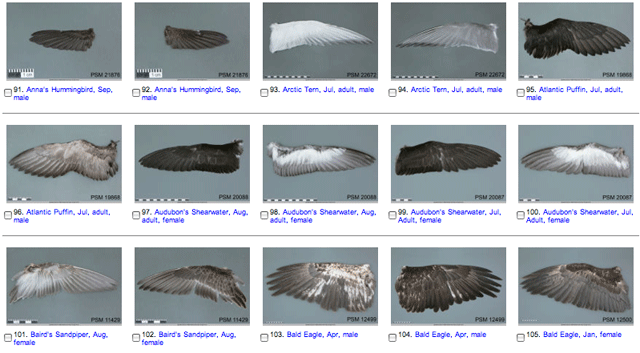November 26, 2007
Fly Far and Wide
Accusing all modern art of being left-wing probably doesn?t get us very far. What might be more useful is to ask whether there is a dominant consensus when it comes to political attitudes in modern art today. Is art good at presenting alternative perspectives and shaking our worldviews, or does much of it congratulate us on our prejudices? If we?re honest, most of us would probably have to say ?yes?, in as much as wider contemporary society can be dominated by bland consensus and conformity. Of course, there is still challenging and provocative art, but perhaps not as much as we?d like. Even Nicholas Hytner at the National Theatre complained about wanting a really good ?mischievous right-wing play? to shake things up a bit. If we take him at his word - that he?s not censoring them when they land on his desk - then why are these spiky, thought-provoking works not being written?
There are some rather obvious gaps. For instance, there?s plenty of anti-war art out there (think of Mark Wallinger?s State Britain, which is the recreation of Brian Haw?s eccentric protest on Parliament Square, or the spate of anti-war plays produced, like David Hare?s Stuff Happens, or the verbatim plays at the Tricycle Theatre), but where?s the pro-war art? It?s a minority view, but it?s intriguing that for all its spirit of experimentation and shock, no one in the arts is prepared to explore this argument further. And with all this concern for community art, there are a few communities that never seem to get much airtime. In the 1980s there were lots of agitprop plays about the impact of mine closures on working-class communities, so where are the plays about the end of foxhunting in the countryside? Most obviously, where is the satire about radical Islam or the ultimate attack on political correctness? When an issue so dominates in the media (and has, potentially, so much comedy value), why hasn?t anyone really touched it?She goes on to say quite a bit more, this writer from Britain, Munira Mirza.Although the political compass is changing, so-called radical artists usually stick to what?s comfortable. It?s very easy to be anti-Bush these days, but try being anti-recycling. You?ll be branded a heretic and lose your friends in high places very quickly. Indeed, there is hardly any artistic critique or satire about environmentalism, even though the majority of people in surveys feel deeply ambivalent about being hectored about flying, carbon footprints and so on. Never mind Jerry Springer: The Opera, or even ?Mohammed the Opera? (if any artist would dare to do such a thing), Al Gore is practically crying out for his own musical! The artist Mark McGowan is one of the few artists who has managed to spoof environmentalism. He once tried to ?raise awareness? about pollution in Britain?s rivers by publicising the fact that he was going to dump a tonne of waste in the Thames. On another occasion, he announced he would leave a tap running in his London gallery to raise awareness of wasted water. On cue, green protesters arrived to try to turn it off. Why isn?t there more of this in our age of supposed irreverence and playful postmodernism?
More crucially, however, what passes for ?radical? these days is actually quite conservative and reactionary in character. In 2001, the artist Michael Landy publicly destroyed all 7,277 of his possessions in a former C&A shop on Oxford Street. ?Breakdown? was supposed to be a statement about consumerism, the pressure of material wealth, money doesn?t make you happy, etc - practically Church of England stuff. Much of contemporary modern art displays our own pieties. As the editor of spiked Brendan O?Neill has argued, Marc Quinn?s preachy statue, ?Alison Lapper Pregnant?, displayed more elitism about individual identity being shaped by nature than even the imperial Victorian statues she shared Trafalgar Square with (see Statue of limitations, by Brendan O?Neill).
As many critics would accept, it?s a tough challenge to bring politics into art without losing some subtlety. It is a very rare thing for artists to hit the right political note without their work looking like a simplistic didactic message. Picasso?s ?Guernica? (1937) is a rare example of a painting that succeeds as propaganda and art ? telling the world about the Luftwaffe bombing of the Spanish town, while also screaming out the existential misery of twentieth-century warfare. But, as the art historian Simon Schama notes in his book The Power of Art, much of Picasso?s work and politics afterwards was too closely aligned to Stalinism to achieve the same effect again. The radicalism of an artist in his art does not necessarily correlate to his politics. Salvador Dali, possibly the most subversive artist of the twentieth century, supported Franco in the Spanish Civil War.
Which is why it is hard not to feel a sense of relief when fine artists today avoid bringing politics into their work, especially when you know how bad their politics can be. Thank god for a bit of apolitical postmodernism, one might say.
And as for me?
Some people are left wing. Some are right.
I have two wings and I fly very very far and wide.
Everyone else flops around in circles.
*
*
*
More here:
Posted by Dennis at November 26, 2007 5:06 PM
Leave a comment